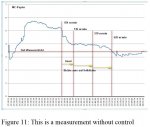PricelineNegotiator
Well-known member
You may not have to be a woman to be a gynecologist, but it is advisable that you know the ins and outs (no pun intended) of a vagina.
How you get that knowledge can come from many sources. You may not need your own vagina to learn how one works, but it is advisable that you at least spend a little time studying a few. The problem with a lot of the info on the internet is that you find many keyboard commandos thinking that google is their friend, without knowing the source of the google info, or how to apply the info to a particular situation. If your pressroom is staffed with competent employees, then I would suggest that you take them at their word. If you lack any competent pressroom workers, then I suggest you find some. This will allow you to focus on your own job in the company, and in the process perhaps not piss people off. It still baffles me that some companies will hire less that fully experienced pressroom personell with the thought of saving a few bucks, in the cost center that is usually the highest in the company. At the very least there should be a fully competent pressroom supervisor that can solve these issues based on experience actually DOING the job as opossed to reading about it.
Inb4 someone reports your post for mentioning vaginas.
Being a keyboard commando is so old school, I prefer the term armchair general.














